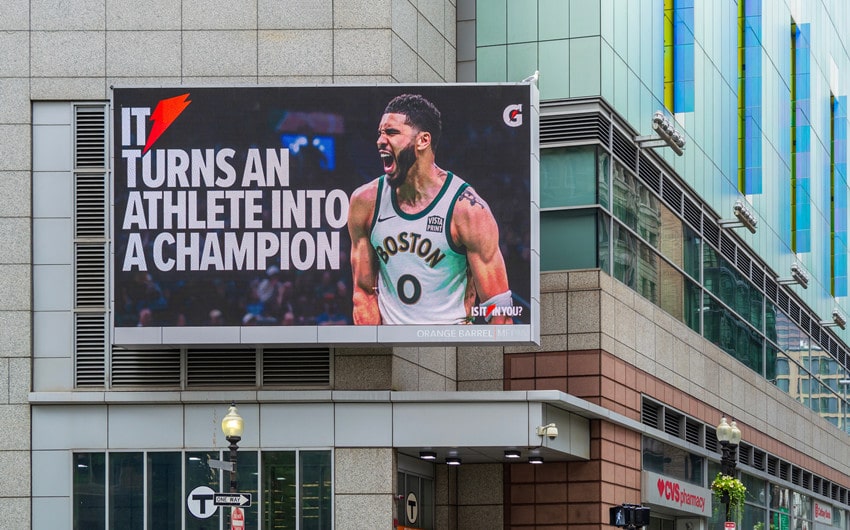The Day Billboards Learned to Whisper: Ambient Advertising in the Age of Emotion-Aware AI
There was a time when billboards merely yelled. Loud, bright, and static — they battled for eyes on roadsides and city corners. But what if billboards quit yelling and began whispering? Picture taking a stroll through a park and noticing an ad that changes mood with the weather, or a streetcorner screen that mutates its color palette when folks appear exhausted after work. In this new era of emotional intelligence, ads don’t just talk to you — they talk with you.
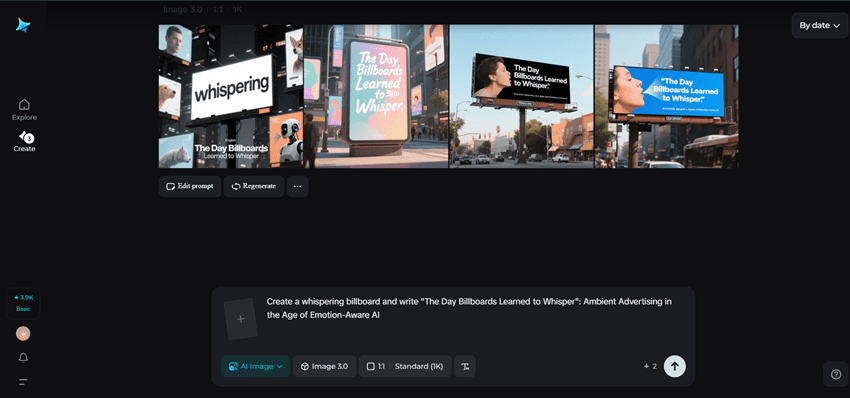
That is where emotion-aware AI comes into play, integrating empathy and data into a single homogenous canvas. And with design tools such as Dreamina and its AI photo generator, artists are now creating visuals that feel, react, and adjust. Rather than beating people over the head with the same message, these “whispering billboards” learn to feel the ambiance. They scan light, tempo, even collective sentiment — turning advertising into an experience that hears.
When the city begins to feel alive
Imagine strolling along a street that feels alive. The ad in the corner coffee shop window senses that it’s raining, so it radiates cozy amber hues and a steaming mug animation. On a scorching day, it changes to iced beverages and sparkling blues. But it’s not simply responding to weather — it’s picking up on energy.
Emotion-aware AI is teaching billboards to feel:
• Environmental surroundings: light, temperature, and time of day.
• Crowd behavior: speed, density, and group expressions.
• Emotional signals: vocal tone, facial expression, and public mood changes.
Rather than being immutable noise, advertisements become understanding storytellers. A billboard ad for a fashion brand might go minimalist on peaceful morning drives, then burst into bright hues when energy levels spike on rush-hour drives. The more human the ad, the more that people resonate — not because they’re being targeted, but because they’re being heard.
Designing whispers, not shouts
Advertising has continually pursued visibility, but ambient marketing now pursues resonance. The future of design is subtle, responsive, and highly sensitized. It’s about creating ads that don’t require attention — they elicit it through emotional resonance.
Envision the possibilities:
• A digital ad for perfume that shifts tone of music as pedestrians slow down.
• A public display that speaks in verse on rainy days.
• A travel advertisement that illuminates as someone smiles beside it.
These moments are magical because they appeal to emotion prior to cognition. They whisper subtly into our subconscious: we see you, we feel with you.
This is the evolution of advertising — not as spectacle, but as conversation.
The emotional architecture of visuals
Creating for emotion takes a delicate balance of technology and creativity. It’s not flashy effects; it’s reading and reflecting human tone.
Emotion-sensitive images could adapt to three levels of input:
• Sensory cues: weather monitoring sensors, lighting by time, background noise.
• Behavioral cues: crowd density, gestures, or pause time in front of a screen.
• Affective cues: facial micro-expressions, picked up on using ethical AI models.
Each tweak is small — a color change here, a glow there. It’s not manipulation, but empathy. Visual empathy, pixel-coded.
And when artists work with Dreamina, they’re able to see through these adaptive moods before they’re ever coded. The AI image creator allows us to preview what “emotional design” might be like in actual space — from peaceful dusk hues to dynamic city reflections.
Crafting emotion-aware visuals with Dreamina
Step 1: Compose a text prompt
Begin by going to Dreamina and writing a descriptive text prompt that creates an emotional tone for your idea for a vision.
An example might be: A futuristic city billboard softly glowing at dusk that has an adaptive display that changes colour based on human emotion and weather, ambient lighting, calm energy, and a poetic atmosphere.
This is what Dreamina will give you, and then you will get expansive visuals that feel alive and aware of their surroundings.
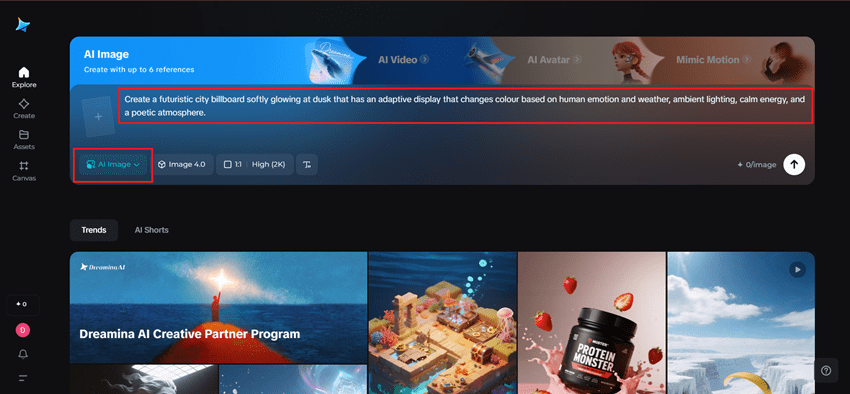
Step 2: Adjust parameters and create
Select the correct parameters to create the artwork —model type, aspect ratio, and image size to develop your vision as needed. You can select 1 K for drafts or 2 K for high-resolution quality. Click on Dreamina’s icon and your photo will generate. In seconds, your design will transform from a concept description to a soft, light-responsive scene.
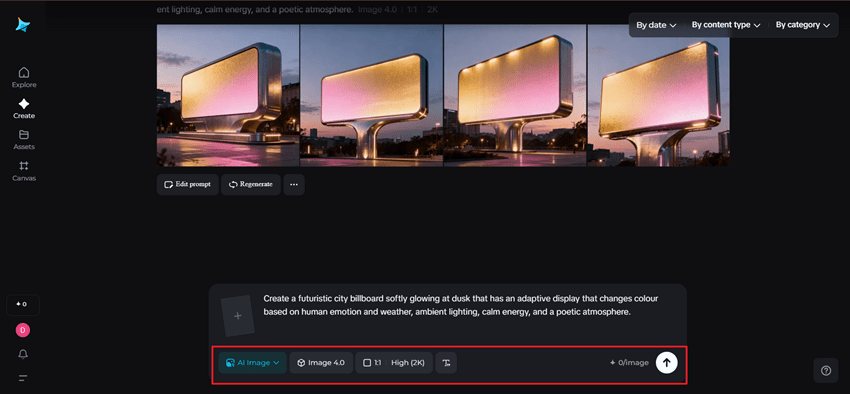
Step 3: Personalize and download
There are advanced tools that require refining tools and customization to examine the image to create the best display for your billboard attraction. You may wish to try inpaint to change small aspects, expand to visualize a background setting with ambience, remove to trim paths’ unnecessary aspects of the visual, and retouch for a finished look. Finally, when your adaptive billboard is ready to awaken emotional responses in the city with your visual work, click Download and the visually attractive way to share your work anytime.
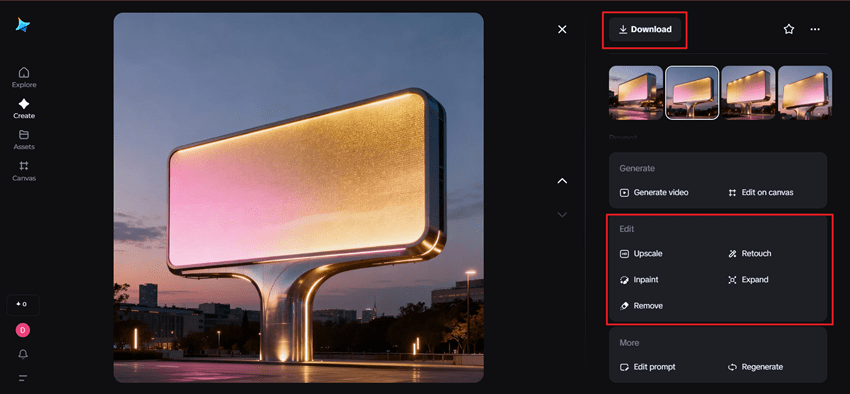
Empathy as a design principle
Empathy isn’t on the options menu in this new era of advertising — it’s the default aesthetic. The more feeling that their visuals convey, the more emotional connection they make. The next wave of creatives isn’t just creating ads — they’re creating mood.
Even some marketers are employing the AI logo generator to imbue their brand symbols with emotional depth — think of a logo that subtly shifts shape or tone in reaction to public mood. It’s the opposite of the outdated “static brand identity” concept. Rather, it’s about building a living brand expression that evolves in tandem with the people who view it.
Emotion-sensitive design is not just lovely — it’s right. It reminds us that technology can hear, speak back, and emulate human nuance without trespassing on privacy. The whisper trumps the shout, and the world is a more peaceful place for it.

Visuals that breathe with the city
The ambient ad dream is not to sell harder, but to feel softer. The charm is in the restraint. Each glow, color, and fade serves a purpose.
Imagine a world where city streets themselves are dynamic emotional murals:
• Bus shelters that show encouraging art when the skies grow dull.
• Shopfronts that release calming gradients when the masses thicken.
• Public art walls that adapt their imagery based on mood metrics.
Advertising as civic design, then, is part of the urban fabric. It’s not noise anymore; it’s empathy in motion.
The AI poster generator is at the center of it all. It assists designers and marketers with imagining flexible campaigns that are adaptable by the hour or mood. Each poster, albeit on the computer, is alive — attuned to the rhythm of life about it.
The poetry of presence
What’s most magical about whispering billboards is that they’re aware. They don’t try to get your attention; they greet it. They pay attention to the world like you do — the gentle rain, the quiet conversations, the sense of dusk as a breath.
These designs recall that the future of creativity begins in the present. When art, technology, and compassion converge, the outcome isn’t merely intelligent marketing — it’s human narrative, renewed for public space.
Conclusion: When ads learn to listen
We’re kind of slipping into this weird new space. Every surface out there starts feeling like it has its own heartbeat. Lights buzzing along with some real smarts. Messages hitting you right where it counts, personal like that. This emotion-picking AI thing. It flips advertising on its head. Turns it into an actual back-and-forth chat. Not just blasting noise everywhere. More like a quiet little whisper. You know, shared right between the brand and some random person strolling by.
And at the center of it all is Dreamina — the imaginative connector between creativity and compassion. From its AI picture generator that creates realistic emotive images, to its customization features that tweak emotion itself, Dreamina encourages designers to envision a place where even billboards can hear.
Because when imagination is taught to whisper rather than scream, the message doesn’t only find us — it lingers.

